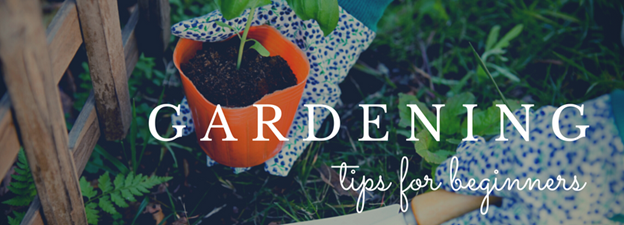
Gardening is much like life… sometimes there are failures along the way, but eventually, a healthy environment can foster growth and nourishment, even if it takes a while to see results.
Have you ever considered gardening, but didn’t know where to start?
A grower himself, Dr. Graves recently shared tips with the team on how to begin by giving plants the optimal environment to thrive (anyone notice the metaphor, here?!).
Although so much can vary – what you decide to plant, where at, when, and how can all play a role in the success of a garden in which light, heat, nutrients, and water are key – there are some universal suggestions that he has found to be helpful when starting a garden in our state.
1. Decide what to plant and when.
First, it’s important to be aware that different types of plants grow during different times of the year.
Cold weather vegetables are commonly sprouted and/or planted in March and April (they can usually survive light snow), can be ready to pick later in the spring. These include:
- spinach
- kale
- collard greens
- cabbage
- snap and snow peas
- beets
- broccoli
- carrots
- radish
- onion
Warm weather fruits and vegetables can be sprouted indoors in March and April and then planted outdoors in late May/early June (or seed planted outdoors at this time) for summer harvest and include:
- cucumbers
- tomatoes
- peppers
- squash
- corn
- watermelon
- muskmelon
- strawberries
- herbs
2. Choose where/how to plant.
There are a variety of forms a garden can take depending on such things as light exposure, access to water, and available space.
Containers such as Seed Starter Dome Kits can be helpful for sprouting seeds in March and April and above ground gardening containers and boxes can be constructed or purchased if in-ground gardening is not ideal. However, keep in mind that sprouting and above ground gardening may require extra hydration because 1) no water can be extracted from the earth and 2) seeds need extra water because they don’t have roots yet.
In addition, domes and greenhouses generally hold moisture longer – an important factor when gardening in such a dry state as Colorado.
3. Amend the soil.
Colorado soil is known for its clay which helped form such beautiful rocks, however, it’s not very conducive for gardening.
Dr. Graves likes to blend this native soil with purchased organic gardening soil or at times, just use the organic soil itself in order to give plants the nutrients they need.
4. Have realistic expectations.
Dr. G recommends planting more than general guidelines due to failure rates. During any given planting season, he can see a 20-50% fail rate depending on many factors including the health of the seed, weather, etc. Planting extra can make up for possible mishaps and over-planting can always be thinned out if necessary.
Remember, just like in life, learning something new can take time and each season there can be takeaways helpful for the future!
Wonder when to pick your harvest?
This web page gives guidance based on individual fruits and vegetables.
So, is it thyme to try gardening?
Go ahead…we’re rooting for you!
For naturopathic medicine, acupuncture, holistic counseling, massage, and herbal supplements, please call our office at (303) 688-6698 or click here to schedule an appointment in Castle Rock.

Leave a Reply